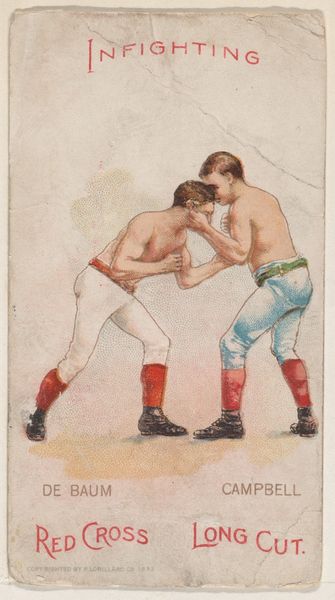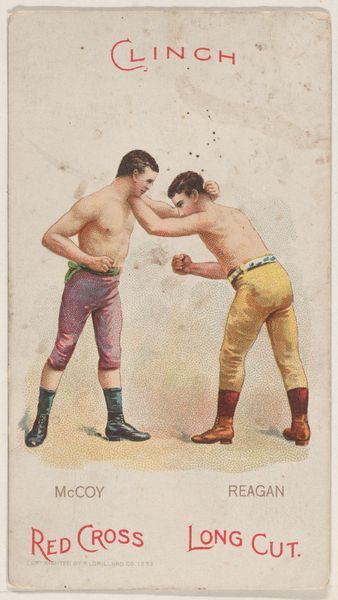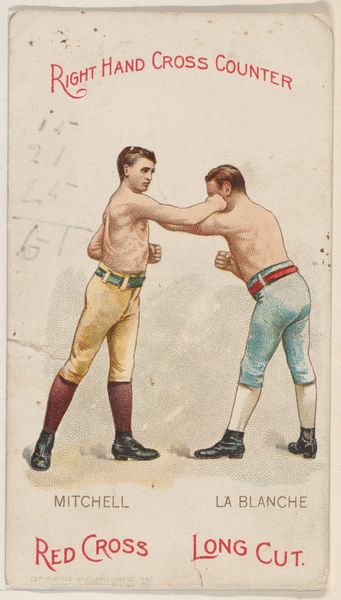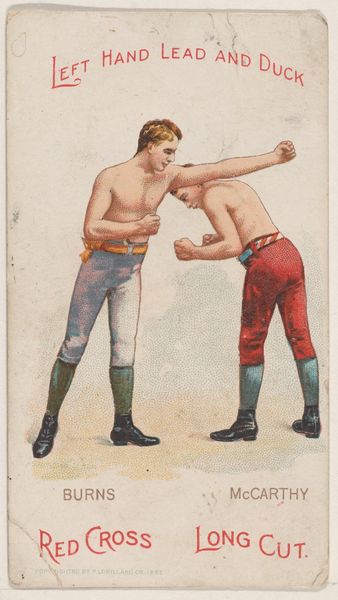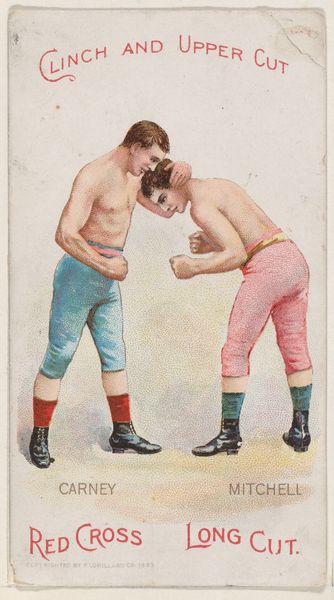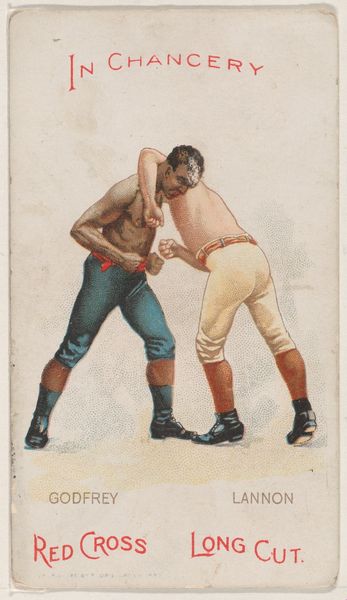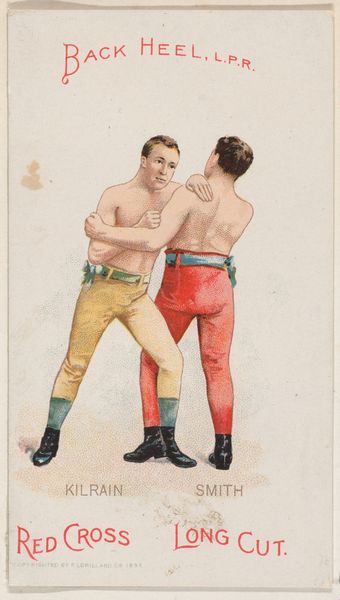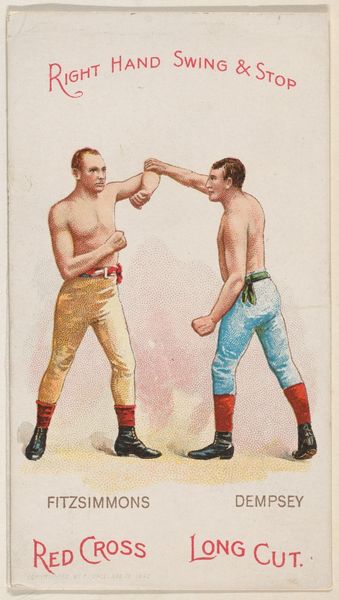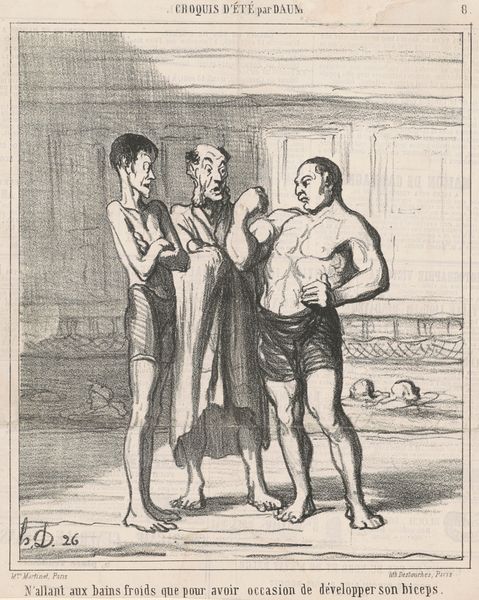
Left Hand Stop, Solomon Smith and Johnny Van Heest, from the Boxing Positions and Boxers series (N266) issued by P. Lorillard Company to promote Red Cross Long Cut Tobacco 1893
0:00
0:00
drawing, coloured-pencil, print
#
drawing
#
coloured-pencil
# print
#
coloured pencil
#
genre-painting
#
academic-art
#
realism
Dimensions: Sheet: 4 in. × 2 1/4 in. (10.2 × 5.7 cm)
Copyright: Public Domain
Curator: What an intriguing image. This is "Left Hand Stop," part of the "Boxing Positions and Boxers" series created around 1893 by the P. Lorillard Company. It was made to promote Red Cross Long Cut Tobacco. You can see it’s a print that combines coloured pencil and drawing techniques. Editor: It's charming! Almost like a little tableau. The pink and ochre trousers, those almost balletic poses. There’s something quite theatrical about it. Curator: Right? The medium plays a crucial role here. Think about these cards being churned out en masse, these hand-worked drawings meticulously reproduced as adverts for mass consumption. How does the Red Cross, itself suggestive of service and production, fit in to Lorillard’s marketing? Editor: It really highlights how boxing and tobacco became intertwined with public spectacle and consumerism at the turn of the century. Cards like this fostered a public interest, not just in the sport but also in these personalities—the boxers Smith and Van Heest are presented almost as collectible commodities. Curator: Exactly. Look at their attire: The details tell us so much about the social conventions of the time, not only regarding sportswear but its representation to the masses. Editor: The Met has it on view, and I am certain that context allows modern audiences to think critically about what these objects represent. There's also this underlying current of how athleticism, tobacco, and even patriotism are so readily connected in these advertisements, reinforcing societal norms about masculinity and commerce. Curator: It makes you wonder, too, about the actual working conditions of the artists creating these drawings. We tend to forget about the laborers who translate vision into repeatable, commercial form. Editor: Right, the history isn't just about sport or consumption; it’s a wider societal tapestry. But beyond the context, there is a certain innocence in the piece's design, isn’t there? That it remains engaging a century later indicates that it struck a chord that is difficult to fake. Curator: Absolutely. Seeing the process by which this seemingly innocent collectible object emerged is fascinating; it provides so many directions to think about labor and materials, doesn't it?
Comments
No comments
Be the first to comment and join the conversation on the ultimate creative platform.
